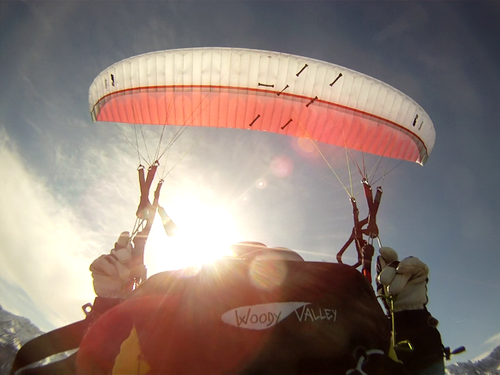UP Makalu 3 M |
|||||||||||||||||||||||||||||||||||||||||||||||||||||||||||||||||||||||||||||||||||||||||||||||||||||||||||||||||||


|
|||||||||||||||||||||||||||||||||||||||||||||||||||||||||||||||||||||||||||||||||||||||||||||||||||||||||||||||||||
Instability rating |
|||||||||||||||||||||||||||||||||||||||||||||||||||||||||||||||||||||||||||||||||||||||||||||||||||||||||||||||||||
|
|||||||||||||||||||||||||||||||||||||||||||||||||||||||||||||||||||||||||||||||||||||||||||||||||||||||||||||||||||
Glider characteristics |
|||||||||||||||||||||||||||||||||||||||||||||||||||||||||||||||||||||||||||||||||||||||||||||||||||||||||||||||||||
|
Launch preparations: average
launch characteristics: balanced, delayed climb, needs gentle guidance, good feedback during inflation, no braking required, slows before zenith, control check simple, low takeoff speed
asymmetric collapse: canopy collapses at low angle to leading edge, en: EinklapperDynamikGering, total course change 90-180°, (1), moderate course change rate, moderate forward pitching 45-60°, (2), moderate height loss 30-39 m, (2), low sink velocity 10-14 m/s, (1), G-Force < 2,5 G, (1)
Frontal collapse: canopy collapses with low total collapse area, marked pitch backwards 45-60°, moderate pitch forwards 30-45°, low dynamics, no course change, (1), immediate automatic recovery, symmetric recovery, immediate return to normal airspeed, moderate height loss 30-39 m, (2), low sink velocity 10-14 m/s, (1)
Spiral dives: moderate sink velocity increase, Moderate G-Force 3,5- 4.0 G, (2), Sink velocity after 720° <14 m/s, (1), Moderate maximum sink velocity < 18 m/s, (2), sink velocity increase < 6 m/s on brake release, (2), Course change 90-180° after spiral exit, (1), moderate height loss during recovery 30-60 m, (2)
B-Stall: normal force required, moderate pitch backwards 15-30°, moderate pitch forwards 15-30°, stable sink phase, no tendency to deform, immediate return to normal airspeed, 6-8 m/s, height loss on recovery < 20 m
big ears: simple initiation, stable flight phase, immediate automatic recovery, Vsink unaccelerated 2,5-3 m/s, Vsink accelerated 3,5-4 m/s, Vunaccelerated 0-3 km/h less than trimspeed, Vaccelerated 0-3 km/h faster than trimspeed |
|||||||||||||||||||||||||||||||||||||||||||||||||||||||||||||||||||||||||||||||||||||||||||||||||||||||||||||||||||
Notes |
|||||||||||||||||||||||||||||||||||||||||||||||||||||||||||||||||||||||||||||||||||||||||||||||||||||||||||||||||||
|
Launch Characteristic: UPs Makalu3 is unproblematic, the canopy climbs moderately to the zenith and stabilizes over the pilot with no marked brake input required. Asymmetric Collapse: Asymmetric collapse testing produced a surprising result: the winner in this discipline was the LTF-B glider Makalu3 from UP. This glider collapses softly with no serious dynamic reactions which makes it easy to manage. Front Collapse: Again, the Makalu 3M from UP demonstrated excellent characteristics after front collapse tests. Recovery after massive front collapses is similar to the U-Turn Bodyguard 3M, with no delay and little height loss. Spiral Dive: Generally not problematic. Big Ears: All gliders exited without pilot input, the Makalu 3 and Sprint Evo demonstrated slightly delayed exiting. B-Stall: very stable sink phase. |
|||||||||||||||||||||||||||||||||||||||||||||||||||||||||||||||||||||||||||||||||||||||||||||||||||||||||||||||||||
Rating |
|||||||||||||||||||||||||||||||||||||||||||||||||||||||||||||||||||||||||||||||||||||||||||||||||||||||||||||||||||
|
Safety class 2 This class of paraglider react mildly to all of the following manoeuvres: frontal collapse, asymmetric collapse or spiral dive.Mildly means that the above manoeuvres result in moderately dynamic reactions from the glider and/or moderate height losses. Pilots who have learned and are able to correctly apply basic recovery training techniques should be able to maintain glider control and minimise height loss in the event of one of the above manoeuvres. Generally, subsequent critical glider reactions requiring immediate and precise pilot input are not to be expected from gliders of this class. The safe use of a glider in this class requires skills learnt in standard basic training. Emergency descent methods may be performed with standard techniques and do not require special skills. As on occasion, all gliders may react more dynamically to a disturbance than expected, additional training such as regular ground handling or SIV training is recommended. |
|||||||||||||||||||||||||||||||||||||||||||||||||||||||||||||||||||||||||||||||||||||||||||||||||||||||||||||||||||

